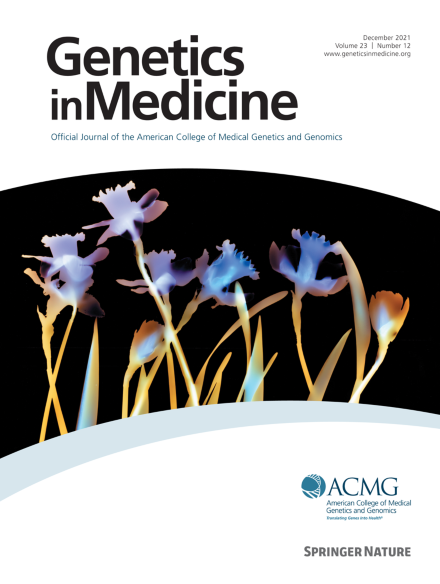Intersectionality in a sociogenomic world: How do race, disability, socioeconomic status, and polygenic prediction interact to affect perceptions of educational trajectories?
IF 6.6
1区 医学
Q1 GENETICS & HEREDITY
引用次数: 0
Abstract
Purpose
Education is important for lifelong skills and economic growth; however, student placement decisions may be shaped by social biases. As genomic information captured via polygenic scores becomes more available, it may also inform student placement decisions. We assessed the intersectional effects of polygenic scores, race, disability, and socioeconomic status on US adults’ views of educational trajectories using an online experimental survey design.
Methods
A total of 1367 US adults were randomized to one of 16 conditions and prompted to read a short vignette about a boy named Michael, also depicted in an image. Each condition varied Michael’s race (Black/White), disability (wheelchair user/no), socioeconomic status (high/low), and polygenic score (high/low) for educational attainment (EA-PGS). After reading the vignette, the respondents were asked to answer multichoice questions about Michael’s immediate and long-term educational trajectories.
Results
Variation in Michael’s EA-PGS strongly influenced participants’ expectations regarding (1) the most appropriate immediate educational program for Michael (ie, general, special, or gifted education), (2) whether he would graduate high school, and, if so, (3) the highest educational degree he would complete in his lifetime (associate, bachelor, master, or PhD). Across these responses, high EA-PGS was associated with more socially desirable outcomes, whereas the opposite was true for low EA-PGS. Depicting Michael in a wheelchair significantly influenced respondents’ expectations that his most appropriate immediate educational trajectory would be special. There were significant interactions between Michael’s race, disability, socioeconomic status, and the EA-PGS.
Conclusion
Information about children’s EA-PGS may affect their views about their immediate and long-term educational trajectories. The negative effects of low EA-PGS were comparable to those of high EA-PGS. The EA-PGS may be interpreted in ways that compound the existing stereotypes related to a child’s race, disability, and socioeconomic status.
求助全文
约1分钟内获得全文
求助全文
来源期刊

Genetics in Medicine
医学-遗传学
CiteScore
15.20
自引率
6.80%
发文量
857
审稿时长
1.3 weeks
期刊介绍:
Genetics in Medicine (GIM) is the official journal of the American College of Medical Genetics and Genomics. The journal''s mission is to enhance the knowledge, understanding, and practice of medical genetics and genomics through publications in clinical and laboratory genetics and genomics, including ethical, legal, and social issues as well as public health.
GIM encourages research that combats racism, includes diverse populations and is written by authors from diverse and underrepresented backgrounds.
 求助内容:
求助内容: 应助结果提醒方式:
应助结果提醒方式:


